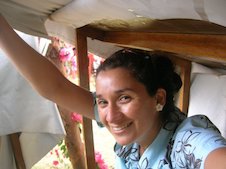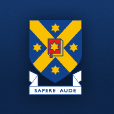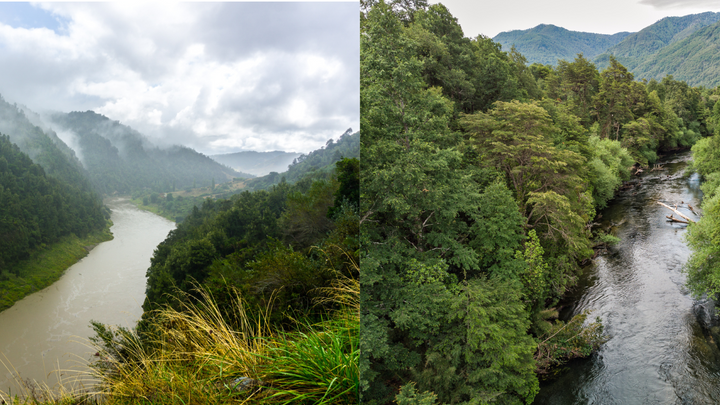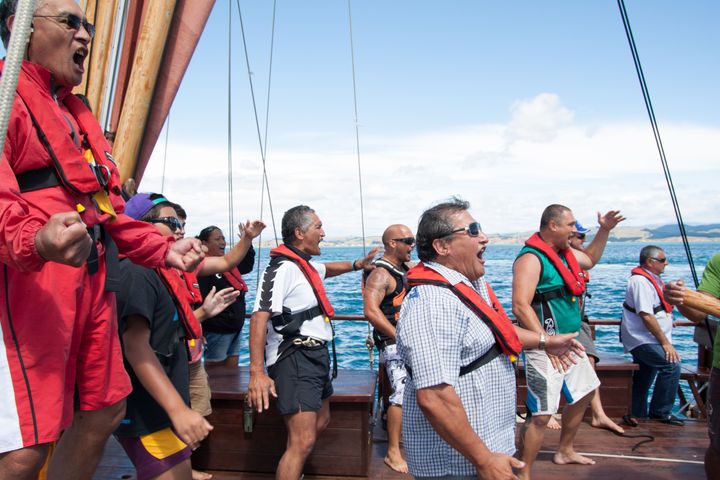New book lifts curtain on Rapa Nui 'theatre' traditions
'Rapa Nui Theatre: Staging Indigenous Identities in Easter Island' describes Dr Moira Fortin Cornejo’s experience living on Rapa Nui and gives rare insights into its fascinating performance traditions.
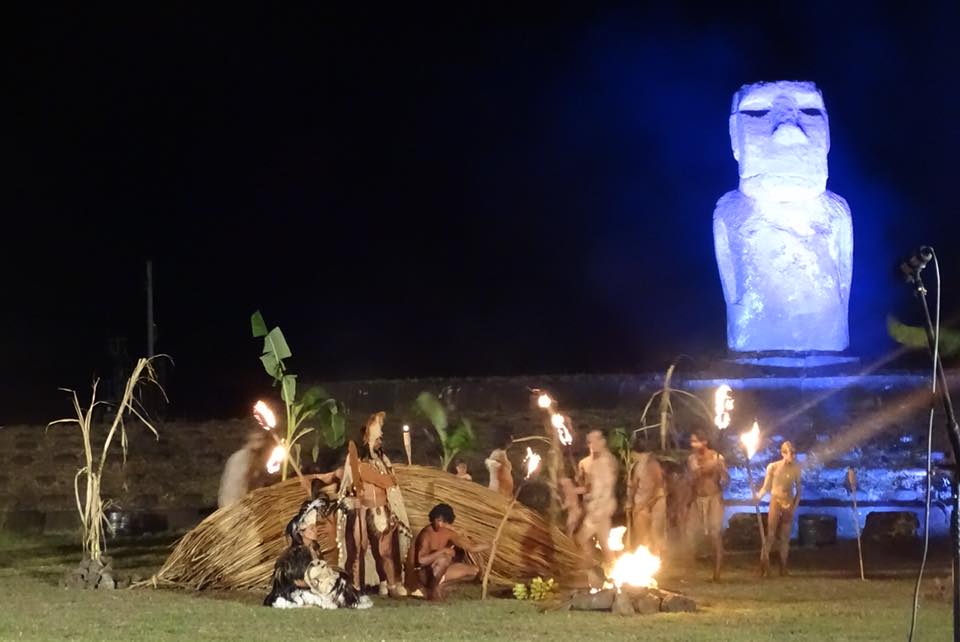
Languages and Cultures Pūkenga (Lecturer) Dr Moira Fortin Cornejo’s latest publication Rapa Nui Theatre: Staging Indigenous Identities in Easter Island both describes her experience living on the remote Pacific island and provides a rare insight into its fascinating performance traditions.
Why did you undertake research in this area, and the publication project?
I have been in touch with the Rapa Nui culture all my life. My grandmother moved to Rapa Nui in the 1970s and lived there for number of years, creating strong familial relationships that last until today. Her daughter, my aunt, has lived on Rapa Nui for the last 30 years. I moved there in 1999 out of curiosity; I wanted to see the place that had such a great impact and influence in my family. I stayed there for 12 years.
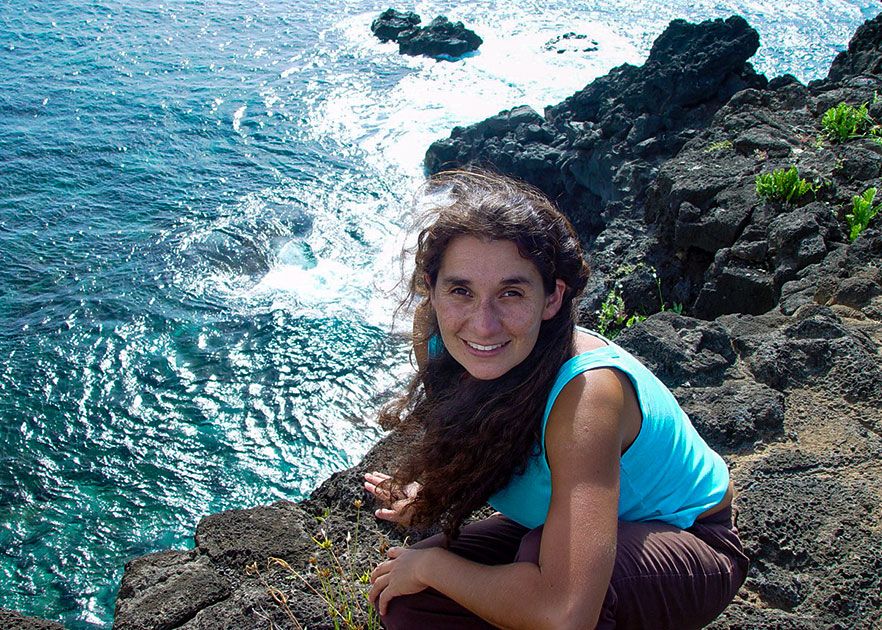
In 2003, as a recent graduate for Theatre Studies in Chile, I was amazed at the wide variety of performances found in Rapa Nui every day. I joined a dance group where I learnt the language, the history, and the oral narratives through dance. In 2005, I was working at one of the local schools teaching drama but failing miserably at engaging student’s creativity.
I was very naïve, thinking that theatre was theatre no matter where you were. Rapa Nui students were NOT interested in performing anything else but their stories in their particular manner.
So, I decided to start this journey by doing a MA in Pacific Island Studies at Te Tumu (2007), writing about the development of Rapa Nui theatre, which later was reworked for my PhD at Te Herenga Waka—Victoria University of Wellington (2016). This book is the result of an ongoing lifelong commitment to the Rapa Nui performing arts.
What is it about?
Rapa Nui Theatre: Staging Indigenous Identities in Easter Island, looks at the production of theatre in Rapa Nui from an actor’s perspective examining rehearsals, the use of the space/stage, costumes, design, the inclusion of other Rapa Nui performing arts in the productions of the different pieces. It also discusses the production of theatre from an anthropological point of view, looking at the socio-political reasons for staging specific stories.
The book covers precolonial Rapa Nui rites, ceremonies and festivities as antecedents of contemporary Rapa Nui theatre. It explores the colonial history of Rapa Nui with Chile and how this turbulent relationship prompted the establishment of the first Rapa Nui theatre troupe in 1975. The troupe decided to perform Rapa Nui oral narratives in the indigenous language using different areas of the island as stage. This group set the rules and methods for producing theatre in Rapa Nui, including performances produced in 2021 during the COVID 19 lockdown.
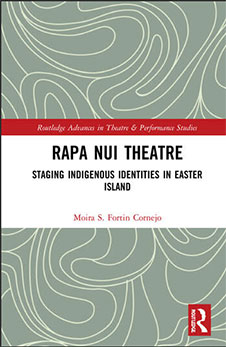
This is the first book written about the production of Rapa Nui theatre – what are some new understandings, or surprising aspects of this “unique and culturally distinct performance tradition”?
Rapa Nui theatre is not the type of theatre you are thinking about, the one performed in a black box, with spotlights. In fact the word theatre does not exist in Rapa Nui, the term used to describe the Rapa Nui version of theatre is a‘amu tuai which translates as dramatizing old stories. A‘amu tuai is normally performed on an outdoor stage, with live music and for special occasions, including Mahana o te Re’o, the celebration of the Rapa Nui language day, and Tapati Rapa Nui, a summer festival which celebrates Rapa Nui culture and practices.
The dramatization of a‘amu tuai can involve the use of a wide variety of Rapa Nui performing arts such as takona (body painting), kaikai (string figures), hoko which is the Rapa Nui version of the Māori haka and songs. Every single one of these artistic expressions tell different aspects of the same story, so the delivery of the narrative is not only done through the spoken word but also in metaphorical and symbolic ways.
This is why learning about Rapa Nui performing arts opens up a huge door when it comes to learning about the Rapa Nui culture.
Why has this not been extensively researched?
Rapa Nui is mostly known by the moai (stone statues) and its archaeology. In recent years issues regarding politics and the colonial relationship with Chile have been more prominent.
Rapa Nui is so much more than archaeology and politics!
Rapa Nui performing arts are something that has not been considered as research worthy in terms of its craft, skills, methods and style. They have been mentioned in wider researched projects about Rapa Nui culture, as one aspect of this culture, but not studied in depth. I think it not been extensively researched because it requires knowledge about the Rapa Nui language and time to engage in participant observation to experience rehearsals, and performances.
I hope reading this book makes people think about
. . . the importance of performing arts as they carry site specific world views and knowledge of each culture. Through performing arts I have learnt hugely about Rapa Nui customs, protocols, culture and language, so the Rapa Nui performing arts are crucial to have a better understanding of this culture and place that I call home.
With this book my aim is to open up the conversation about Rapa Nui performing arts with the wider oceanic population.
As Rapa Nui people are also Spanish speakers, I feel they are left aside a bit due to language barriers, but the Rapa Nui language and culture is very much from Oceania and I hope that Oceanic people reading this book, will see the similarities and appreciate the differences, and hopefully connect with Rapa Nui people through the performing arts.
You should read this book if
. . . you are interested in theatre and performing arts from Oceania…. If you are interested in reading about someone’s experience living and performing, failing, and learning through a research journey of discovery of 12 years in Rapa Nui…. if you are interested in learning about Rapa Nui resilience and mana (power/ intelligence) to overcome colonial struggles and injustices using theatre as a vehicle to revitalize precolonial culture, customs, stories and language.
Learn more about Dr Moira Fortin Cornejo’s work
